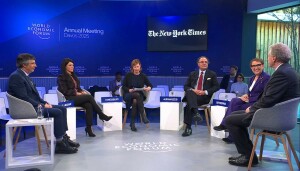In an earlier coverage of textile sector’s export performance during FY22 published in this section, BR Research had highlighted that despite the reports of gloom and doom generally dominating Pakistan’s textile industry, exports by high value-added segments had performed exceptionally well during financial year 2023-24. Three out of four major apparel manufacturing categories – towel, knitwear, and garments - recorded the highest ever export volumes, while bedding came within inches of highest-ever volume (FY22). In fact, we wrote that “if export prices in the global market had persisted at 2022 levels, textile export earnings would have easily breached $21 billion based on FY24 volumes!”. (For more, read part one of “Pakistan’s textile in a brave new world”, published by BR Research on Jul 22, 2024)
But prices do not stay at peak levels forever. Instead of reaching $21 billion, Pakistan’s textile export earnings fell by over two billion dollars in two years. Despite a record rise in export volume of high value-added segments, annual textile export earnings clocked in at just $16.3 billion, with earnings declining across all product categories.

What happened? Compared to peak year performance of FY22, export unit prices fell dramatically, with a six percent decline for bedding and towels, and a 40 percent decline in average unit price of knitwear and garments. Of course, part of this fall was anticipated, as the pricing power enjoyed by exporters during the post-lockdown supply chain shortages of 2021-22 was re-claimed by buyers. But that was not all.
With a collapse in the price of raw material cotton internationally, it was only a matter of time before price demanded by exporters also adjusted accordingly. In fact, world cotton prices are now averaging at a four-month low, fast approaching the pre-pandemic range. That puts the future of Pakistan’s export in jeopardy, especially as demand for fast fashion adjusts to recessionary headwinds in the developed markets.

But which value-added segments are most sensitive to raw material cotton prices, and what does each mean for future of textile exports? An analysis by BR Research shows that historically, while average export unit price (defined as three-month moving average - 3MMA) of towels and bedding mirror movements in international cotton prices more closely, it is the average export price of readymade garments segments that is subjected to disproportionate - or wilder swings – due to changes in price of underlying raw material.
Put simply, it means that changes in the price of raw material cotton are reflected more quickly in the average export price of categories such as towel and bedding, or without a lag. However, average export unit price across these categories is relatively more range bound, meaning that it continues to trade in a narrower band – reflected in only six percent decline in average export unit price of towel and bedding against peak demand year (FY22) against a fall in word cotton prices by more than one-third.

In sharp contrast, export unit price of higher value added segments such as knitwear and readymade garments have witnessed sharper volatility than the price of cotton. Between FY22 and FY24, 12-month average cotton prices fell by nearly 30 percent. Meanwhile, average export unit price of knitwear fell by a whopping 43 percent during the same two periods, while garments average export unit price fell by a rocking 31 percent.
It is quite obvious what this means for textile export earnings in the short run. If world cotton prices stay put (or fall further) the highest export revenue earning segments – knitwear and garments seem set to suffer. Together, the two contribute nearly half of total textile group export earnings. And given the escalation in domestic cost of production due to energy tariffs, exporters may only be able stay in competition for so long. In fact, it is quite likely that export volume (quantity exported) may witness a sizeable downturn in the ongoing financial year.

But beyond short run concerns, there may also be some significant lessons. Focus on the scatter plots, and bedwear’s extraordinary performance would stand out as the only export category with significant presence in quadrant I, and zero years in quadrant III. Put simply, this means that bedwear is the only segment wear quantity exported had managed to grow even in years of significant price increases. Compare this to performance of yarn, where quantity exported had declined even in years when export price has fallen.
That in a nutshell defines that Pakistan’s comparative advantage in the world textile trade, which quite clearly exists in bedwear/home textile, and is most definitely absent in yarn. Of course, global home textile trade has a finite upside, as higher value adding segments such as garments and knitwear manage to earn more bang for the buck. Whether it should stay that way is also a question mark, considering the slow but certain shift of home textile demand towards sustainability and lower turnover.
Pakistan’s textile export faces tougher challenges in a brave new world. Whether it should dig deeper in its heels, and cultivate its existing competitiveness in medium value-adding segments such as home textile and towels, or turbo charge the shift towards knitwear and readymade garments? That for another day.


























Comments